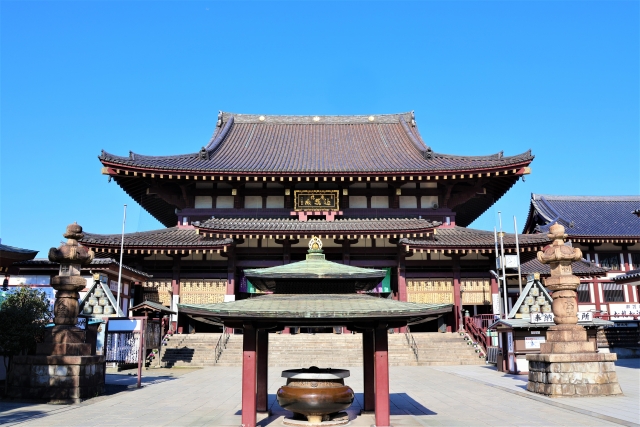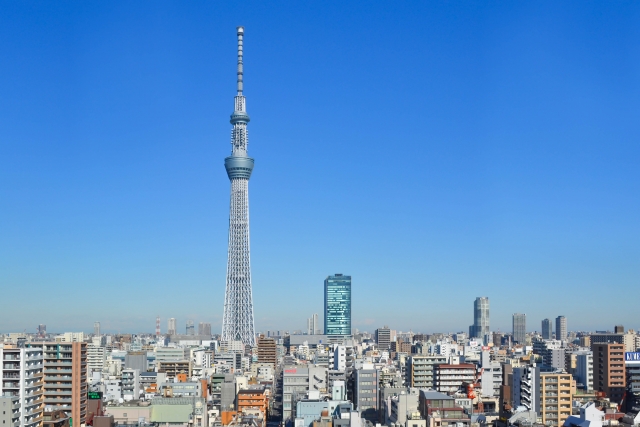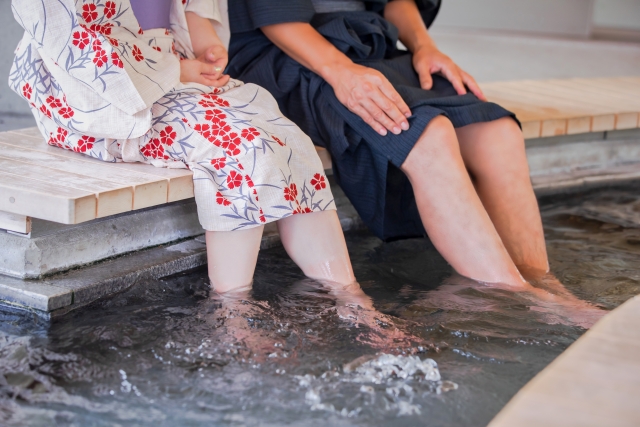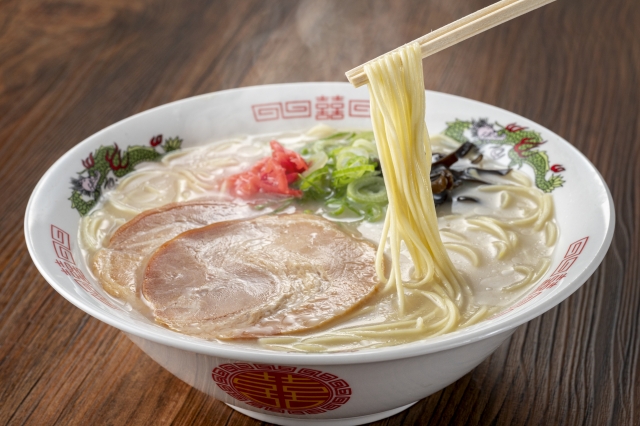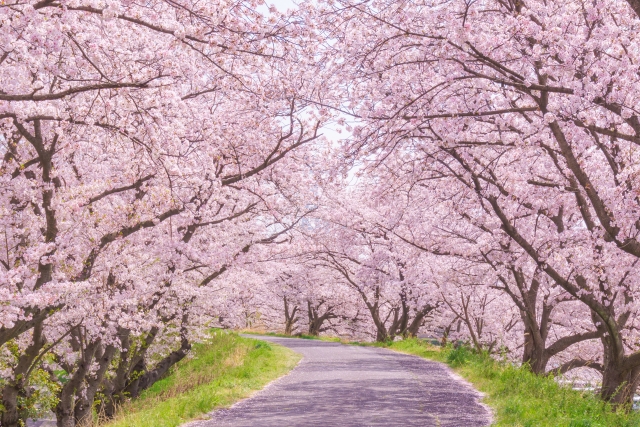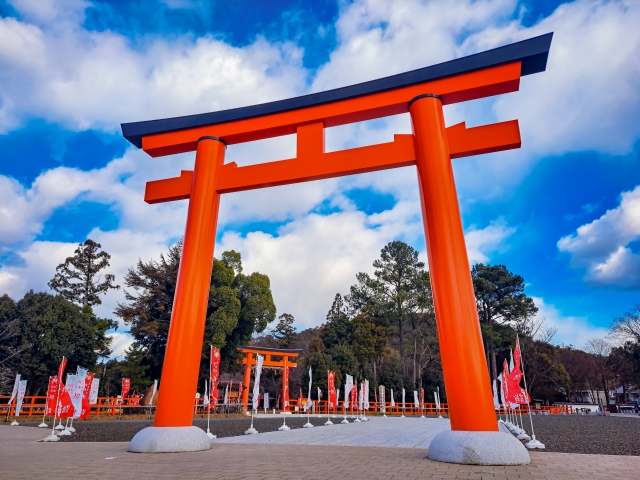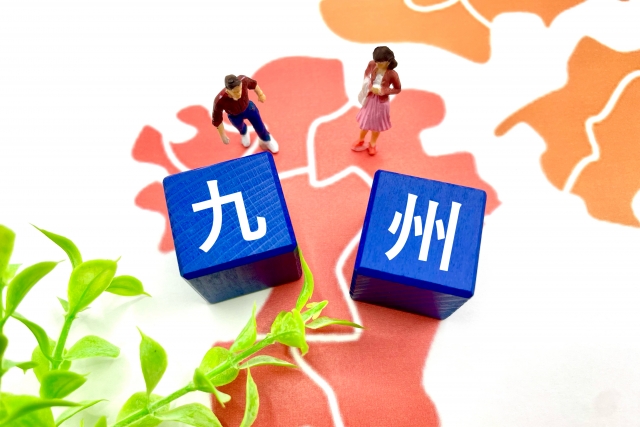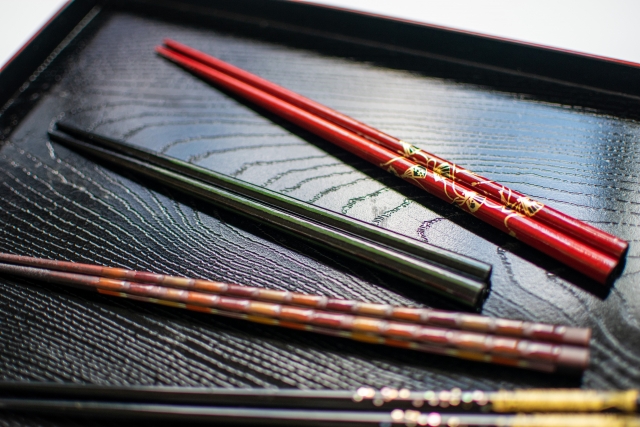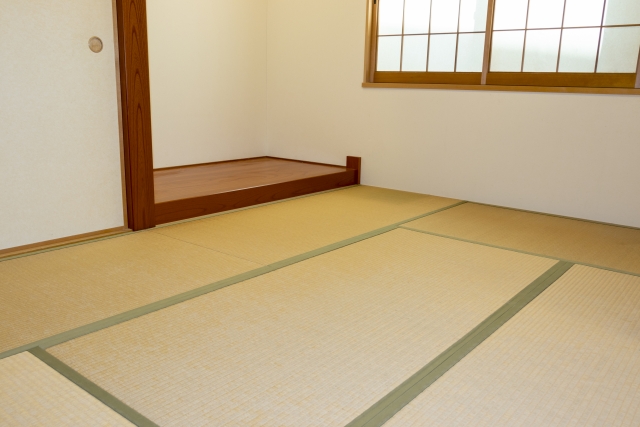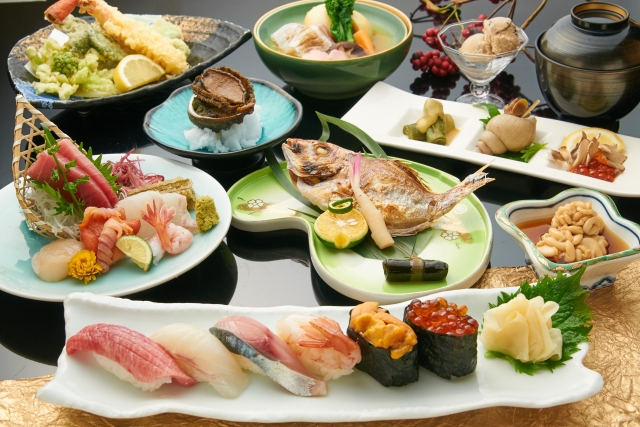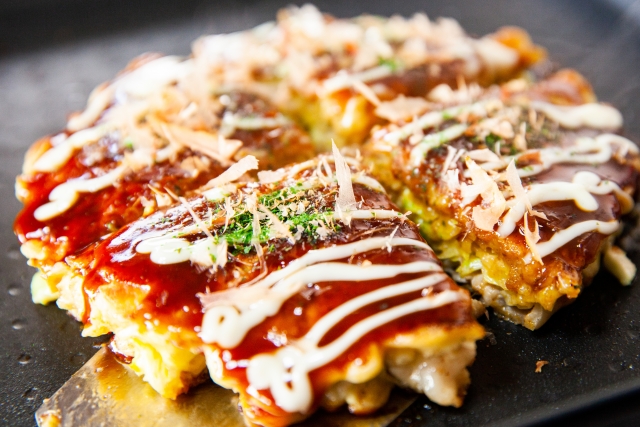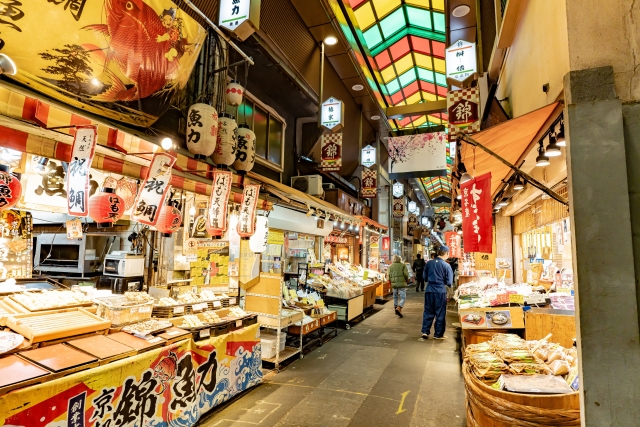When you think of Japanese culture, many people probably think of temples and shrines. The various unusually scenes seen at temples, and shrines, can be very mysterious. For people from overseas, it may be difficult to understand the difference between temples and shrines, or how to worship if you are not familiar with them. However, Japanese temples and shrines have been a part of Japanese people’s lives since ancient times, and by learning about them, you will be able to learn more about traditional Japanese culture. In this article, I would like to introduce you to Japanese temples and shrines.
 Temples and shrines are two of the most popular spots to experience Japanese culture, and the atmosphere of both are somewhat similar, aren’t they? To put the difference between the two in simple terms, temples are Buddhist and shrines are Shinto, institutions of different religions. As for the difference in the appearance of the buildings, temples are the ones with Buddhist statues and tombs, and shrines are the ones with torii gates. Buddhism is a foreign religion that is said to have been introduced to Japan from foreign countries such as China and India. Shinto, on the other hand, is a religion that originated in Japan and believes in many gods. It believes in nature, such as mountains, forests, stones, and sacred trees, as well as in specific people. There is even a phrase “eight million gods” from the belief that gods dwell in everything in this world. Buddhism and Shinto are both familiar to Japanese people, and many Japanese pray to both Buddhist and Shinto gods, visit shrines on New Year’s, and hold funerals in the Buddhist way. Although the two religions are completely different originally, it is a unique aspect of Japanese culture that people accept them in their daily lives without something wrong with them.
Temples and shrines are two of the most popular spots to experience Japanese culture, and the atmosphere of both are somewhat similar, aren’t they? To put the difference between the two in simple terms, temples are Buddhist and shrines are Shinto, institutions of different religions. As for the difference in the appearance of the buildings, temples are the ones with Buddhist statues and tombs, and shrines are the ones with torii gates. Buddhism is a foreign religion that is said to have been introduced to Japan from foreign countries such as China and India. Shinto, on the other hand, is a religion that originated in Japan and believes in many gods. It believes in nature, such as mountains, forests, stones, and sacred trees, as well as in specific people. There is even a phrase “eight million gods” from the belief that gods dwell in everything in this world. Buddhism and Shinto are both familiar to Japanese people, and many Japanese pray to both Buddhist and Shinto gods, visit shrines on New Year’s, and hold funerals in the Buddhist way. Although the two religions are completely different originally, it is a unique aspect of Japanese culture that people accept them in their daily lives without something wrong with them.
 Temples have monks, nuns, and other practitioners of Buddhism, and they have statues of Buddha. There are many types of Buddhas, such as Dainichi Nyorai, Yakushi Nyorai, Shaka Nyorai, and Shokanon-bosatsu. You don’t need to know the difference between them to enjoy sightseeing, but the more knowledge you have, the more fun you will have visiting temples. Also, while you cannot see the deities enshrined in shrines, you can see the statues of Buddha in most temples. Many Japanese hold funeral ceremonies using the Buddhist way, and the graves are often located on the grounds of temples.
It is said that it was the Soga clan that built many temples after the Asuka period(592-710) when Buddhism was introduced to Japan. The oldest temple in existence today is the Shitennoji Temple in Osaka, which was also built by Prince Shotoku, who is of Soga descent. After that, emperors of the Tenmu lineage, who ruled from the Jinshin War to the Nara period, were eager to build temples. Emperor Shomu, who had Kokubunji temples built all over the country, and Ashikaga Takauji, who built Ankokuji temples all over the country, are said to have been especially devoted to building temples.
Buddhism was originally founded in India around the 5th century B.C. by Buddha (real name: Siddhartha Gautama). As Buddhism spread in India, the Buddha was deified, and people began to worship the stupa that contained his remains. Eventually, stupas were built in places of ascetic practices called Samgha, and stupa worship came to be included in the practices. This was the beginning of Buddhism.
After the death of the Buddha, about 500 years later, Buddhism was divided into Mahayana Buddhism and Theravada Buddhism. Theravada Buddhism, which means “small vehicle,” is the idea that only practiced people can be saved and not the general public. However, based on the idea that the Buddha must have wanted to save all people, Mahayana Buddhism was born with a large vehicle to save all people. Theravada Buddhism spread to the south of East Asia such as Thailand, Sri Lanka, and Cambodia, while Mahayana Buddhism spread to the north of East Asia such as Japan, China, Tibet, and the Korean Peninsula. It is said that it took about 1000 years for Mahayana Buddhism to reach Japan.
Temples have monks, nuns, and other practitioners of Buddhism, and they have statues of Buddha. There are many types of Buddhas, such as Dainichi Nyorai, Yakushi Nyorai, Shaka Nyorai, and Shokanon-bosatsu. You don’t need to know the difference between them to enjoy sightseeing, but the more knowledge you have, the more fun you will have visiting temples. Also, while you cannot see the deities enshrined in shrines, you can see the statues of Buddha in most temples. Many Japanese hold funeral ceremonies using the Buddhist way, and the graves are often located on the grounds of temples.
It is said that it was the Soga clan that built many temples after the Asuka period(592-710) when Buddhism was introduced to Japan. The oldest temple in existence today is the Shitennoji Temple in Osaka, which was also built by Prince Shotoku, who is of Soga descent. After that, emperors of the Tenmu lineage, who ruled from the Jinshin War to the Nara period, were eager to build temples. Emperor Shomu, who had Kokubunji temples built all over the country, and Ashikaga Takauji, who built Ankokuji temples all over the country, are said to have been especially devoted to building temples.
Buddhism was originally founded in India around the 5th century B.C. by Buddha (real name: Siddhartha Gautama). As Buddhism spread in India, the Buddha was deified, and people began to worship the stupa that contained his remains. Eventually, stupas were built in places of ascetic practices called Samgha, and stupa worship came to be included in the practices. This was the beginning of Buddhism.
After the death of the Buddha, about 500 years later, Buddhism was divided into Mahayana Buddhism and Theravada Buddhism. Theravada Buddhism, which means “small vehicle,” is the idea that only practiced people can be saved and not the general public. However, based on the idea that the Buddha must have wanted to save all people, Mahayana Buddhism was born with a large vehicle to save all people. Theravada Buddhism spread to the south of East Asia such as Thailand, Sri Lanka, and Cambodia, while Mahayana Buddhism spread to the north of East Asia such as Japan, China, Tibet, and the Korean Peninsula. It is said that it took about 1000 years for Mahayana Buddhism to reach Japan.
 Shinto shrines are said to have originated from places where nature was once worshiped or where sacred rituals were held. Shinto deities are enshrined at shrines, and Shinto priests and priestesses prepare for ceremonies and other tasks. At the entrance of a shrine, there is usually a torii gate. It is a facility that separates the world of the deities from the world of human beings. Most of the shrines are named after the deities that are enshrined in them. Since there are many deities in Shinto, that is why so many shrines are also built. Of these, the largest shrines are called XX Jingu or XX Taisha. Examples are Ise Jingu and Izumo Taisha.
Shinto shrines are said to have originated from places where nature was once worshiped or where sacred rituals were held. Shinto deities are enshrined at shrines, and Shinto priests and priestesses prepare for ceremonies and other tasks. At the entrance of a shrine, there is usually a torii gate. It is a facility that separates the world of the deities from the world of human beings. Most of the shrines are named after the deities that are enshrined in them. Since there are many deities in Shinto, that is why so many shrines are also built. Of these, the largest shrines are called XX Jingu or XX Taisha. Examples are Ise Jingu and Izumo Taisha.
 Fushimi Inari-taisha Shrine, located in Fushimi-ku, Kyoto City, is the main shrine of the Inari Shrines, which are said to number about 30,000 nationwide. The entire Inari Mountain is the shrine’s sanctuary, and you can feel like you are climbing a mountain if you see around thoroughly. The 1,000 torii gates along the approach to the shrine are popular among Japanese and foreign tourists alike, and the sight of a thousand gates in a row is a spectacular sight.
Fushimi Inari-taisha Shrine, located in Fushimi-ku, Kyoto City, is the main shrine of the Inari Shrines, which are said to number about 30,000 nationwide. The entire Inari Mountain is the shrine’s sanctuary, and you can feel like you are climbing a mountain if you see around thoroughly. The 1,000 torii gates along the approach to the shrine are popular among Japanese and foreign tourists alike, and the sight of a thousand gates in a row is a spectacular sight.
 Itsukushima Shrine is one of the major tourist spots in Miyajima. It is located in the center of the town and has a long history.The vermilion-lacquered shrine, built on the sea and connected to the corridor in the shinden style, looks as if it is floating on the sea at high tide. In 1996, the temple was designated as a World Heritage Site by UNESCO.
Itsukushima Shrine is one of the major tourist spots in Miyajima. It is located in the center of the town and has a long history.The vermilion-lacquered shrine, built on the sea and connected to the corridor in the shinden style, looks as if it is floating on the sea at high tide. In 1996, the temple was designated as a World Heritage Site by UNESCO.
 Todaiji Temple is famous for its giant great Buddha. Todaiji Temple, located in Nara Park, is home to the world-famous Great Buddha of Nara (Vairocana Buddha). The temple was built by Emperor Shomu in the Nara period, and designated as a World Heritage Site by UNESCO, being part of the cultural properties of the ancient capital Nara.
Todaiji Temple is famous for its giant great Buddha. Todaiji Temple, located in Nara Park, is home to the world-famous Great Buddha of Nara (Vairocana Buddha). The temple was built by Emperor Shomu in the Nara period, and designated as a World Heritage Site by UNESCO, being part of the cultural properties of the ancient capital Nara.
 Kinkakuji Temple, located along Kinukake Road in Kita-ku, Kyoto City, is a famous temple in Japan and abroad. It is the outer tower of Shokokuji Temple, and its official name is Rokuonji Temple. Originally, it was the villa of Ashikaga Yoshimitsu, the third shogun of the Muromachi Shogunate. The symbolic building of Kinkakuji, the Golden pavilion, is officially called Shariden, and serves as a stupa to enshrine the remains of Buddha. The building was destroyed by arson in 1950, and the present Kinkakuji was rebuilt in 1955. Eventually, the temple was registered as a World Heritage Site in 1994.
Kinkakuji Temple, located along Kinukake Road in Kita-ku, Kyoto City, is a famous temple in Japan and abroad. It is the outer tower of Shokokuji Temple, and its official name is Rokuonji Temple. Originally, it was the villa of Ashikaga Yoshimitsu, the third shogun of the Muromachi Shogunate. The symbolic building of Kinkakuji, the Golden pavilion, is officially called Shariden, and serves as a stupa to enshrine the remains of Buddha. The building was destroyed by arson in 1950, and the present Kinkakuji was rebuilt in 1955. Eventually, the temple was registered as a World Heritage Site in 1994.
 Kiyomizu-dera Temple is one of the most popular temples in Kyoto. Kiyomizu-dera is a World Heritage site that attracts tourists from all over Japan and the world, and is also known as a spiritual spot.
Kiyomizu-dera Temple is one of the most popular temples in Kyoto. Kiyomizu-dera is a World Heritage site that attracts tourists from all over Japan and the world, and is also known as a spiritual spot.
 At the entrance of the temple, there is a gate that represents the boundary between the secular world and the temple. In front of the gate, we bow with gassho (palms together). Gassho is the manner of placing one’s hands together in front of one’s chest. The form differs depending on the religious sect, but it is the basic way to worship at the temple and represents becoming one with the Buddha. When you put your hands together, you must not make any noise. Also, when passing through the gate, do not step on the threshold.
At the Chozuya(purification fountain), bow and then purify your hands and mouth. Hold the ladle in your right hand and pour water on your left hand, then purify your right hand, mouth, left hand, and the handle of the ladle in that order. Eventually, it makes your mind and body purify. This series of actions should be done with the first cup of water you have drawn. When rinsing your mouth, pour the water into your left hand to avoid putting your mouth directly on the ladle.
When you arrive at the main hall, put in the money you have prepared. Some people throw the money in, but since this is a visit to the Buddha, it is best to do so softly. Then quietly put your hands together and pay your respects, you may want to receive the Goshuin(original stamp).
Then, bow again and leave the main hall. If there is a burning incense stand, burn incense. The number of times to burn incense depends on the religious sect, so if you are unsure, you should do it only once.
When you leave the temple for the last time, you should bow in front of the gate again.
At the entrance of the temple, there is a gate that represents the boundary between the secular world and the temple. In front of the gate, we bow with gassho (palms together). Gassho is the manner of placing one’s hands together in front of one’s chest. The form differs depending on the religious sect, but it is the basic way to worship at the temple and represents becoming one with the Buddha. When you put your hands together, you must not make any noise. Also, when passing through the gate, do not step on the threshold.
At the Chozuya(purification fountain), bow and then purify your hands and mouth. Hold the ladle in your right hand and pour water on your left hand, then purify your right hand, mouth, left hand, and the handle of the ladle in that order. Eventually, it makes your mind and body purify. This series of actions should be done with the first cup of water you have drawn. When rinsing your mouth, pour the water into your left hand to avoid putting your mouth directly on the ladle.
When you arrive at the main hall, put in the money you have prepared. Some people throw the money in, but since this is a visit to the Buddha, it is best to do so softly. Then quietly put your hands together and pay your respects, you may want to receive the Goshuin(original stamp).
Then, bow again and leave the main hall. If there is a burning incense stand, burn incense. The number of times to burn incense depends on the religious sect, so if you are unsure, you should do it only once.
When you leave the temple for the last time, you should bow in front of the gate again.
 Like temples, the shrine’s area is considered to be a sacred area, bordered by a torii gate. Be sure to bow before entering the shrine. The center of the approach is considered to be the path of the deities, so walk along the edge of the path.
At the Chozuya, purify your hands and mouth. (The procedure is the same as at temples.)
When you reach the hall of worship, put in the money and ring the bell if there is one. First, bow twice in respect to the deity, and then clap your hands twice in front of your chest.
The tip to this is to move your right hand slightly in front. By pulling back the right hand, which represents the person, you are expressing the feeling of taking a step back and respecting the deity. If there is a sign that tells you how to do this, it is a good idea to follow it. After worshiping, you can receive the Goshuin. The Goshuin is a kind of proof that you have visited the shrine, so be sure to receive it after you have prayed. Finally, bow once more in gratitude before leaving the shrine.
Like temples, the shrine’s area is considered to be a sacred area, bordered by a torii gate. Be sure to bow before entering the shrine. The center of the approach is considered to be the path of the deities, so walk along the edge of the path.
At the Chozuya, purify your hands and mouth. (The procedure is the same as at temples.)
When you reach the hall of worship, put in the money and ring the bell if there is one. First, bow twice in respect to the deity, and then clap your hands twice in front of your chest.
The tip to this is to move your right hand slightly in front. By pulling back the right hand, which represents the person, you are expressing the feeling of taking a step back and respecting the deity. If there is a sign that tells you how to do this, it is a good idea to follow it. After worshiping, you can receive the Goshuin. The Goshuin is a kind of proof that you have visited the shrine, so be sure to receive it after you have prayed. Finally, bow once more in gratitude before leaving the shrine.
 In this article, I have introduced the differences between temples and shrines and how to visit them. The majestic appearance of temples and shrines in a typical Japanese atmosphere has attracted many people from all over the world. The variety of scenery that you don’t usually see will be very beautiful and mysterious. Why don’t you visit and experience something extraordinary?
In this article, I have introduced the differences between temples and shrines and how to visit them. The majestic appearance of temples and shrines in a typical Japanese atmosphere has attracted many people from all over the world. The variety of scenery that you don’t usually see will be very beautiful and mysterious. Why don’t you visit and experience something extraordinary?
Contents


